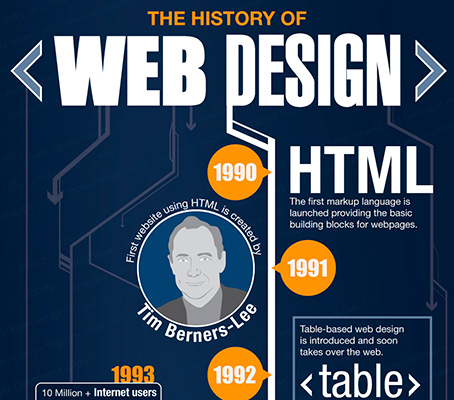Intrigued In Learning Exactly How Site Design Has Evolved Throughout The Years? Explore The Journey From Standard, Straightforward Styles To User-Centric Interfaces That Focus On The Site Visitor'S Experience
Intrigued In Learning Exactly How Site Design Has Evolved Throughout The Years? Explore The Journey From Standard, Straightforward Styles To User-Centric Interfaces That Focus On The Site Visitor'S Experience
Blog Article
Authored By-Abel Bowles
In the past, websites were easy and concentrated on details. Navigation was straight, and style was for desktop computers. Currently, individual experience is crucial. Data guides styles for simple navigation. Responsive formats match different devices. Today, dark setting lowers pressure, and minimal food selections improve navigation. Interactive functions engage customers, and strong visuals stick out. AI integration improves involvement. See exactly how design has actually advanced to improve your on-line trip.
Very Early Days of Website Design
In the very early days of web design, simpleness reigned supreme. Sites were basic, with minimal shades, typefaces, and layouts. https://holdenibumf.blogunok.com/30111535/optimize-your-site-s-potential-with-on-page-seo-tricks-that-change-your-on-the-internet-existence-and-mesmerize-audiences got on supplying info rather than flashy visuals. Customers accessed the internet through slow dial-up links, so speed and functionality were key.
Navigating https://ceoworld.biz/2021/09/27/5-emerging-digital-marketing-strategies-to-try-in-2022/ were straightforward, commonly located at the top or side of the web page. Sites were created for computer, as mobile browsing wasn't yet widespread. Material was king, and developers focused on simple readability over intricate style components.
HTML was the key coding language utilized, and designers had to work within its constraints. Animations and interactive functions were marginal contrasted to today's criteria. Internet sites were fixed, with little vibrant web content or individualized user experiences.
Surge of User-Focused Layout
With the evolution of web site design, a change in the direction of user-focused style concepts has ended up being increasingly prominent. Today, producing web sites that prioritize customer experience is important for involving site visitors and achieving service objectives. User-focused style entails comprehending the demands, choices, and behaviors of your target audience to customize the site's layout, material, and includes appropriately.
Designers now conduct thorough research, such as customer surveys and functionality testing, to gather insights and feedback directly from individuals. This data-driven method helps in creating intuitive navigation, clear calls-to-action, and aesthetically attractive user interfaces that reverberate with visitors. By placing the customer at the facility of the layout process, web sites can deliver a more tailored and delightful experience.
Responsive layout has also become an essential facet of user-focused design, making sure that sites are enhanced for different gadgets and display sizes. This adaptability boosts access and usability, dealing with the varied ways individuals communicate with websites today. Fundamentally, the rise of user-focused design indicates a shift in the direction of creating electronic experiences that prioritize the requirements and expectations of the end user.
Modern Trends in Website Design
Explore the most up to date trends forming website design today. One noticeable fad is dark mode design, using a streamlined and modern-day appearance while reducing eye strain in low-light settings. Another essential trend is minimalist navigation, streamlining food selections and improving customer experience by concentrating on essential elements. Incorporating micro-interactions, such as computer animated buttons or scrolling impacts, can create a much more engaging and interactive website. Receptive style continues to be crucial, ensuring smooth individual experiences throughout numerous tools. In addition, using bold typography and unbalanced formats can include aesthetic rate of interest and draw attention to details web content.
Incorporating AI innovation, like chatbots for client support or personalized suggestions, boosts customer involvement and streamlines procedures. Ease of responsive website has likewise end up being a considerable fad, with designers focusing on inclusive design methods to accommodate diverse individual demands. Accepting sustainability by maximizing web site performance for speed and efficiency is another emerging trend in web design. Working together with user responses and data analytics to repeat and boost design constantly is necessary for staying pertinent in the ever-evolving digital landscape. By embracing these modern patterns, you can develop an aesthetically enticing, straightforward web site that resonates with your target market.
Verdict
As you review the development of internet site layout from the early days to currently, you can see exactly how user-focused layout has actually ended up being the driving force behind modern-day patterns.
Accept the journey of change and adaptation in website design, always maintaining the customer experience at the forefront.
Stay current with the most recent trends and modern technologies, and never quit developing your approach to develop visually magnificent and easy to use web sites.
Evolve, adapt, and develop - the future of web design remains in your hands.
